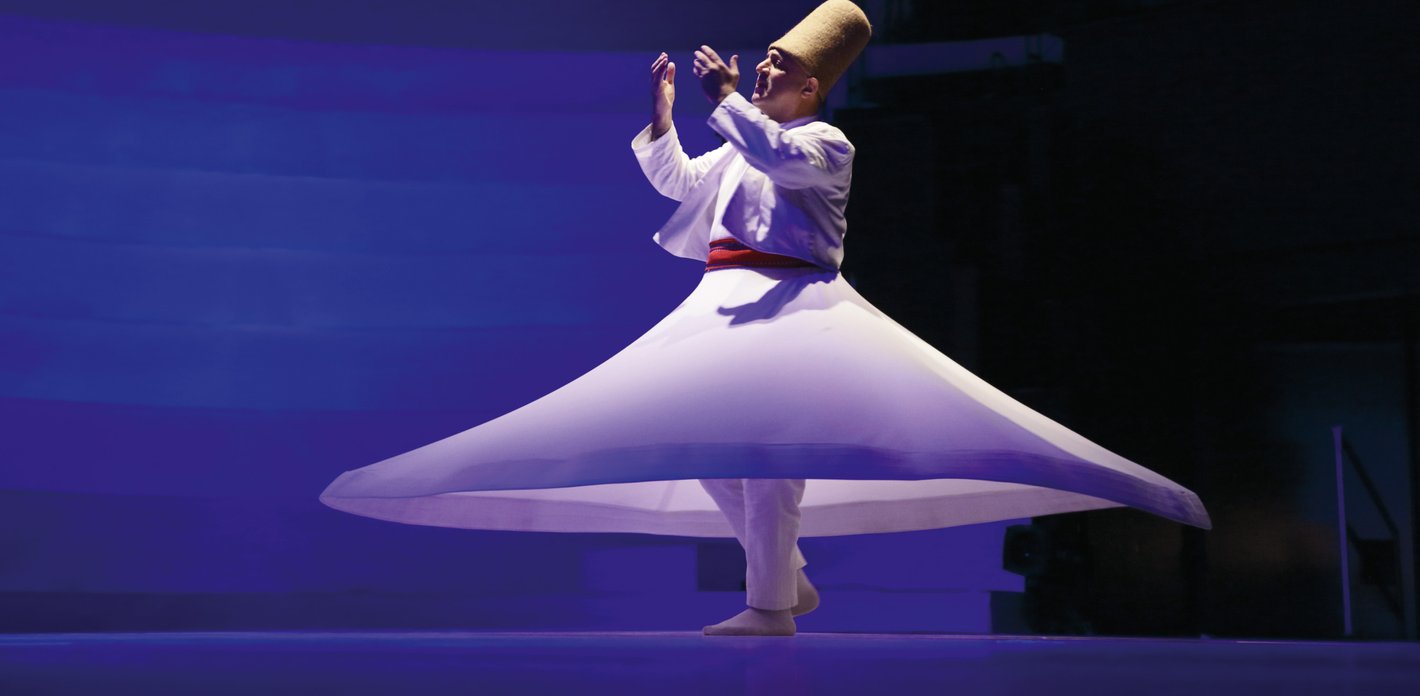CROSSING THE THRESHOLD
The ritual concerned is a simple and intimate one that has been practised for centuries: accompanied by music and singing, the whirling dervishes of Damascus dance in a circle to get closer to God. The singer and Koran scholar Noureddine Khourchid grew up with this Sufi tradition, and presents it at the opening concert of the »Lux aeterna« festival at the Elbphilharmonie.
From northern Africa through the Caucaus to Central Asia, various Sufi orders, and also communities without a spiritual bias, are familiar with the dervishes. The term »darvish« is Persian in origin and means mendicant and wanderer as well as an ecstatic. In its true meaning, it refers to persons who have renounced worldly goods and instead wander through life in search of God. In the process, they cross the threshold from the earthly realm to the world beyond, as expressed in their name: the Persian word »dar« corresponds to »door« in English.
Sufi Festival
vom 25. bis 27. November in der Elbphilharmonie. Mit tanzenden Derwischen, Trance-Ritualen, persischen Liebesliedern und klassischer Musik aus Afghanistan.
Tanzende Derwische in Istanbul
The so-called sema, a whirling dance that is performed counter-clockwise, is one of the many Sufi variations on the theme of the search for God, all of them marked by music and movement. This dervish ritual goes back to the Anatolian town of Konya, where it emerged after the 13th century amongst the Mevlevi (or Mawlawi) fraternity, followers of the famous mystic Rumi.
THE BODY AS A SPINDLE
In the sema, the dervishes seek harmony with the cosmos, which likewise revolves around its own axis. The dance symbolises longing to be reunited with the divine, from which Man was only temporarily separated. As he whirls around in the sema, his body turns into a spindle that links earth and heaven, and at the same time embraces the whole of mankind. The soul that is imprisoned within the body thus celebrates its perpetual, ardent longing to return to the transcendental sphere. In the West, the term trance is often used to denote effect that the dance has. But strictly speaking, it does not involve a dissolution of consciousness, but rather the utmost concentration of body, soul and mind on the principle of the all-embracing.
Text: Stefan Franzen, last updated: 25 Oct 2022
Sufism
is not simply a refuge in trance. Rather, it connects creator and creation – also with the help of music.






